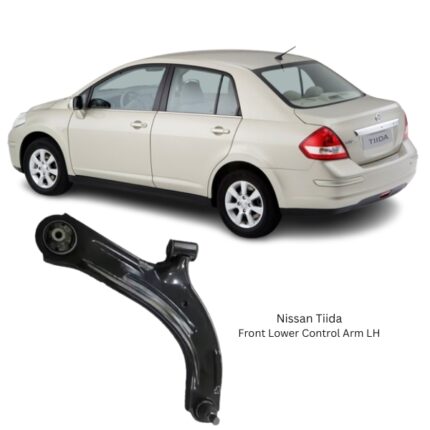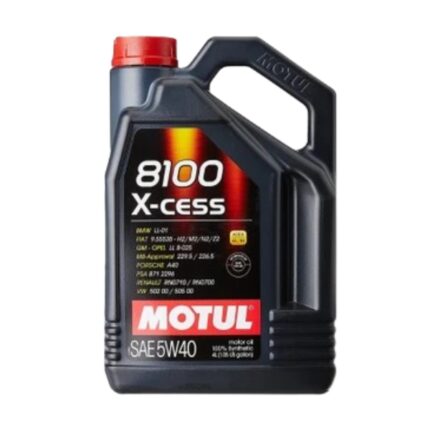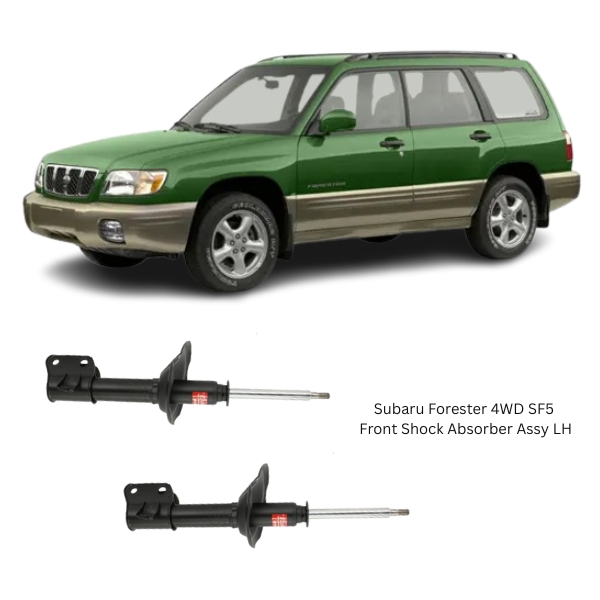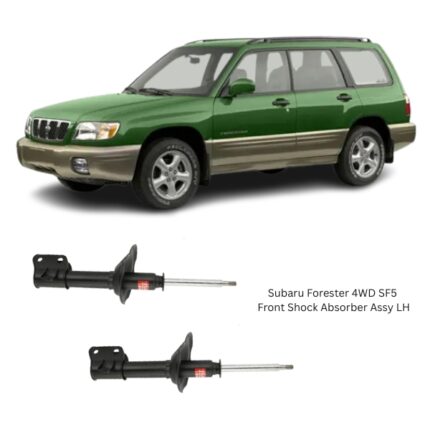Get Subaru Forester 4WD SF5 Front Shock Absorber Assy RH 334191 in Kenya
The Front Shock Absorber Assembly Right-Hand (RH) is a vital structural and functional element of the front suspension system. Its core role is to absorb and dampen the kinetic energy generated by road irregularities, controlling the oscillation of the suspension springs. By converting kinetic energy into thermal energy and dissipating it through hydraulic fluid, the shock absorber ensures a smoother, more stable ride and enhances both vehicle handling and passenger comfort.
Located on the right-hand (RH) side of the vehicle’s front axle, this shock absorber assembly functions in tandem with the suspension spring and other linkage components to maintain consistent tire contact with the road. It significantly influences vehicle behavior under dynamic driving conditions such as acceleration, braking, cornering, or traversing uneven surfaces.
Key Functions
-
Damping Vertical Movement: Controls the rebound and compression of the suspension spring when encountering bumps or potholes, preventing excessive bounce.
-
Enhancing Ride Comfort: Reduces vibration and impact transmission to the vehicle cabin, contributing to a more comfortable driving experience.
-
Stabilizing the Vehicle: Minimizes body roll, dive, and squat during cornering, braking, and acceleration, respectively.
-
Maintaining Tire Contact: Keeps the tires in consistent contact with the ground for maximum traction, braking efficiency, and steering control.
-
Preserving Suspension Geometry: Works with other suspension components to uphold the correct geometry, aiding in alignment and even tire wear.
Construction and Design
The Front Shock Absorber Assembly RH is typically a twin-tube hydraulic unit or gas-charged mono-tube design, depending on the system specification. It is engineered to endure millions of compression and rebound cycles under varied load and road conditions.
1. Upper Mounting Bracket/Stud
-
Connects to the vehicle’s chassis or strut tower.
-
Often includes a rubber insulator or bushing to absorb vibration at the contact point.
2. Piston Rod
-
High-strength, chrome-plated steel rod designed to withstand high stress and friction.
-
Moves vertically within the shock body, driving the internal piston and displacing fluid.
3. Shock Body (Outer Tube)
-
Houses the hydraulic fluid or pressurized gas.
-
Constructed from corrosion-resistant metal to endure environmental exposure.
4. Piston and Valve System
-
Controls the flow of hydraulic fluid through precision orifices and valves.
-
Regulates damping force based on movement speed and pressure, adapting to road conditions.
5. Lower Mounting Eye/Bolt Hole
-
Connects to the lower control arm, knuckle, or suspension hub assembly.
-
Designed to securely anchor the shock while permitting vertical movement.
In strut-type assemblies, the shock absorber may also serve as a load-bearing component, integrating with the coil spring, dust cover, and upper bearing mount.
Hydraulic vs Gas Shock
Most modern shock absorber assemblies are gas-pressurized to minimize fluid foaming and improve response. This type uses a small chamber of pressurized nitrogen gas to maintain consistent damping under prolonged or aggressive driving conditions.
-
Hydraulic shocks rely solely on oil movement and tend to offer smoother damping at low speeds.
-
Gas shocks are more responsive and stable under rapid suspension movement, making them ideal for vehicles driven on diverse terrain.
Location-Specific Importance: RH Position
The right-hand side of a vehicle may experience different loading conditions due to road camber, single-side occupants, or asymmetric cornering forces. A properly functioning RH front shock absorber is essential for:
-
Maintaining directional stability during right turns or lane changes.
-
Equalizing suspension response between the left and right sides.
-
Reducing asymmetric tire wear and uneven handling characteristics.
In multi-link or independent suspension systems, each shock absorber must operate independently yet in harmony with its opposite counterpart to preserve handling balance.
Symptoms of Wear or Failure
A deteriorated or failing shock absorber compromises safety, handling, and ride comfort. Common signs include:
-
Excessive bouncing after hitting a bump or pothole.
-
Nose-diving during braking or squatting under acceleration.
-
Unstable or floaty steering, especially on rough roads.
-
Oil leaks visible on the outer casing of the shock absorber.
-
Unusual tire wear patterns, particularly cupping or scalloping.
-
Clunking or rattling noises, caused by internal component failure or worn mounts.
Early diagnosis and replacement of a failing front shock absorber can prevent damage to other suspension and steering components and maintain optimal driving performance.
Installation and Replacement Considerations
Replacing the Front Shock Absorber Assembly RH typically requires:
-
Raising the vehicle safely and supporting it with jack stands.
-
Removing the wheel to access the shock mounting points.
-
Disconnecting upper and lower mounts, often involving bolts or brackets.
-
Compressing and removing the coil spring if it’s a strut-type assembly.
-
Installing the new unit, ensuring torque specs and alignment are observed.
Proper installation may require realigning the suspension geometry afterward to prevent pulling or steering drift.
Maintenance and Lifespan
Shock absorbers generally do not require regular maintenance but should be inspected every 20,000 to 30,000 kilometers or during routine servicing. Their average lifespan can range from 60,000 to 100,000 kilometers, depending on factors such as:
-
Road conditions (urban vs off-road)
-
Driving style (aggressive vs conservative)
-
Vehicle load (towing, heavy cargo)
-
Climate (extreme heat or cold can affect seals and fluid)
Routine visual checks for leaks, damage, or noise are vital in determining the health of the shock absorber.
Performance Benefits
A new or properly functioning Front Shock Absorber Assembly RH delivers:
-
Enhanced ride comfort, especially over rough or uneven surfaces.
-
Better road grip and tire contact, improving vehicle control.
-
Improved safety through reduced braking distances and better cornering control.
-
Reduced wear on tires and other suspension parts due to controlled movement.
-
Quieter, more composed ride, free from harsh vibrations and instability.
Whether used in daily driving, commercial load transport, or performance scenarios, the front shock absorber remains one of the most impactful components for dynamic vehicle behavior.
Environmental and Safety Considerations
A worn shock absorber can lead to:
-
Reduced braking effectiveness, especially on uneven surfaces.
-
Hydroplaning or skidding, due to uneven tire pressure and lack of contact.
-
Driver fatigue, from constant steering correction and vibrations.
-
Increased strain on suspension joints, ball joints, and struts.
Replacing the RH shock as part of routine suspension care can significantly prolong the vehicle’s overall health and ensure continued safety on the road.
Follow us on Facebook for more parts.





Reviews
Clear filtersThere are no reviews yet.